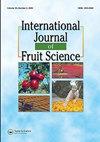糖、果胶及加工温度对菠萝果酱品质的影响
IF 2.5
3区 农林科学
Q2 HORTICULTURE
引用次数: 3
摘要
摘要本研究旨在探讨糖、果胶和加工温度对菠萝酱(光滑的辣椒)品质的影响。对菠萝果肉和果酱的理化成分和近似组成进行了研究,并报道了研究结果。果酱的品质主要取决于糖、果胶的浓度和加工温度。将菠萝果肉加工成果酱后,其理化性质(如TSS和TA)显著增加,与新鲜水果相比,其营养成分、维生素C和矿物质成分有所减少。加工方法对果酱的植物化学成分含量有显著影响。用(45%)糖和(5%)果胶配制并在(90°C)温度下加工的果酱在营养成分、颜色、植物化学物质和维生素C方面被证明是最好的产品。总之,这些结果表明,将新鲜菠萝制成果酱具有巨大的潜力,可以减少新鲜菠萝果实的采后损失,增值产品果酱为人类健康提供了促进健康的化合物。本文章由计算机程序翻译,如有差异,请以英文原文为准。
Effect of Sugar, Pectin, and Processing Temperature on the Qualities of Pineapple Jam
ABSTRACT The present study aimed to investigate the effects of sugar, pectin, and processing temperature on the qualities of jam developed from pineapple (smooth cayenne). The physico-chemical, and proximate composition of pineapple fruit pulp and jam were studied and the results were reported. The jam quality depended highly on the concentration of sugars, pectin, and the processing temperature. Processing of pineapple fruit pulp into jam resulted in a substantial increase in physicochemical properties such as TSS and TA and showed some loss in the nutritional, vitamin C, and mineral composition of the products compared to fresh fruits. The processing methods showed significant effects on the phytochemical contents of the produced jam. Jam formulated with (45%) sugar, and (5%) pectin and processed at (90°C) temperature are proven as best products in terms of their nutritional composition, color, phytochemicals, and vitamin C. In conclusion, these results indicate that converting fresh pineapple into jam has an enormous potential to reduce the post-harvest loss of fresh pineapple fruits, and value-added product jam provides health-promoting compounds to human health.
求助全文
通过发布文献求助,成功后即可免费获取论文全文。
去求助
来源期刊

International Journal of Fruit Science
Agricultural and Biological Sciences-Agronomy and Crop Science
CiteScore
6.40
自引率
0.00%
发文量
64
审稿时长
10 weeks
期刊介绍:
The International Journal of Fruit Science disseminates results of current research that are immediately applicable to the grower, extension agent, and educator in a useful, legitimate, and scientific format. The focus of the journal is on new technologies and innovative approaches to the management and marketing of all types of fruits. It provides practical and fundamental information necessary for the superior growth and quality of fruit crops.
This journal examines fruit growing from a wide range of aspects, including:
-genetics and breeding
-pruning and training
-entomology, plant pathology, and weed science
-physiology and cultural practices
-marketing and economics
-fruit production, harvesting, and postharvest
 求助内容:
求助内容: 应助结果提醒方式:
应助结果提醒方式:


